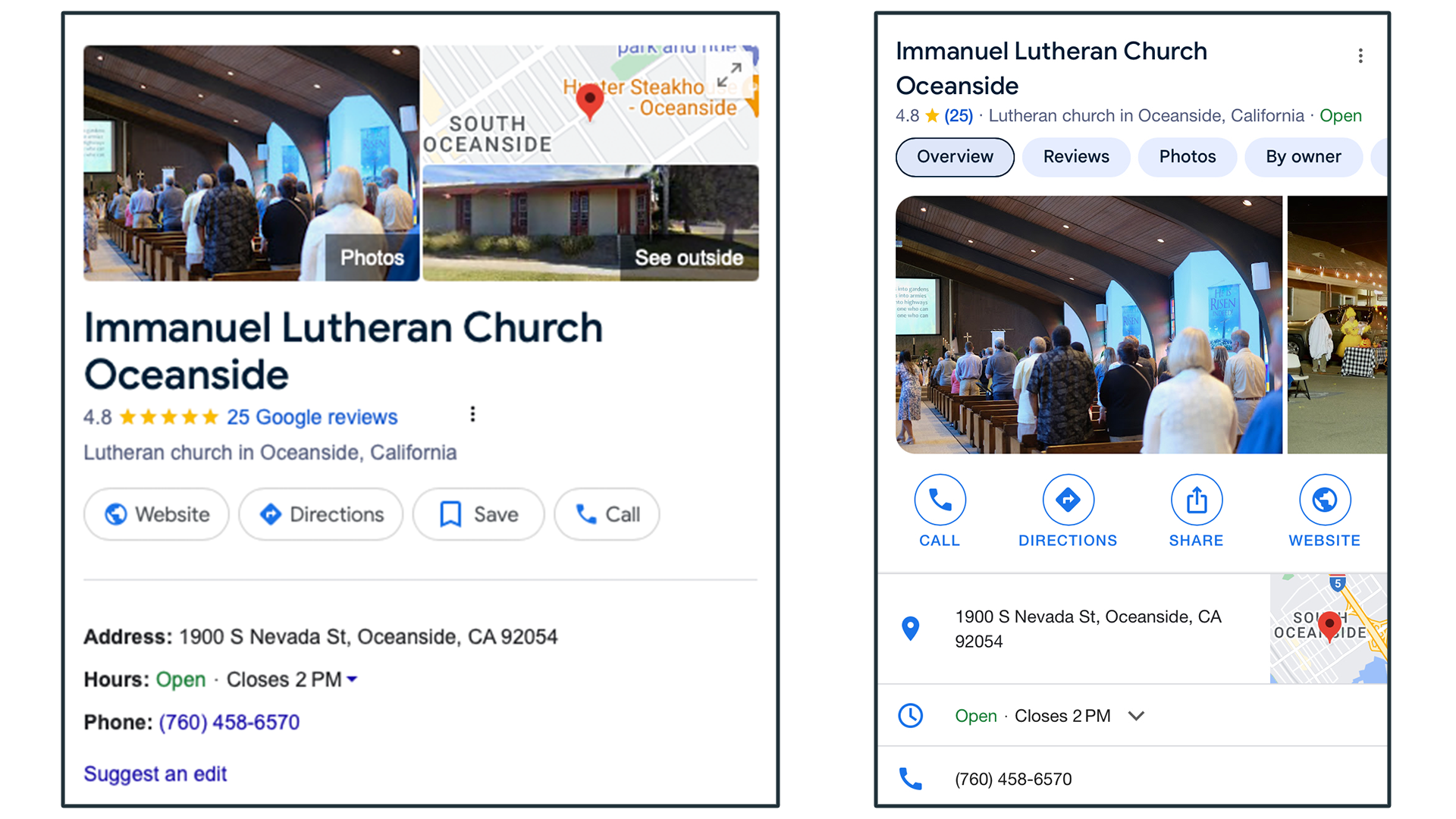
Churches often look to rank themselves on Google with SEO, so that they can reach more people for the sake of the Gospel. Local SEO is a subset of SEO, or search engine optimization, that allows your business to appear specifically in search results for your area—because you wouldn’t want your church to appear to someone located five hundred miles away.
Like any other strategy for your business, it takes time to see the benefits of local SEO. It can take months or even years to see results from your efforts, but that doesn’t mean you shouldn’t try.
Local SEO might sound scary, but it’s not complicated. We’re breaking down the basics with actionable small steps your church can take today to improve your ranking.
What Is Local SEO?
Local SEO is similar to basic search engine optimization in that you are trying to get your church website to appear in searches for certain words or phrases. Local SEO takes that concept one step further and focuses on ranking your church (or business) for keywords that include your city name. For example, “Oceanside church” or “church in Oceanside.”
This strategy also allows your church to show up when someone searches for a phrase like “church near me.” Google recognizes where the person searching is located, so it automatically detects the city name and includes that keyword in its search.
How Can Local SEO Help Your Church?
Local SEO is especially beneficial for churches because, usually, a church’s main goal is to reach people in its local community and encourage them to visit its physical location. With local SEO, your church can reach that goal with more visibility in search results.
How to Implement Local SEO
1. Add City Name to Website
The easiest way to implement local SEO for your church is to include your city name across your website. Include the city name in headers and paragraphs across multiple pages, especially on your contact page and in the footer of your website.
2. Update Name, Address, and Phone Number
Along those same lines, ensure that your church name, address, and phone number are accurate across your website, Google Business Profile (we’ll get to this in a bit), and social media. Not only does this make for a consistent experience for visitors, but it also signals to Google that your business is legitimate and up to date.
3. Create a Business Profile on Google

If you’ve ever searched for a business on Google, you’ve likely come across its Business Profile. It’s a block that appears after you search on the right side of your desktop or as the first result on mobile.
These snippets give visitors an overview of the business, including the information they care most about—like address, reviews, hours, and phone number.
Google prioritizes listings that regularly upload new photos, respond to reviews, and update their information. It might seem like a small thing, but having a Google Business Profile can really impact your local SEO!
Additionally, your Google Business Profile allows your business to appear in Google’s featured places when someone searches for “churches near me.” (See screenshot below for an example.) Your ranking on this snippet can be increased over time by optimizing your listing!

4. Be Active on Social Media
Lastly, your church can improve its SEO by being active on social media, such as Facebook or Instagram. Including your church's physical address on these profiles gives Google an additional page to find and add to Google search results and verifies that your business is legitimate and consistent, which could increase its ranking. Create Facebook events for upcoming activities at your church and regularly promote them on your page.
All you need to get started on local SEO is a simple website, which you can create for free with a 30-day trial of Church360° Unite!
























